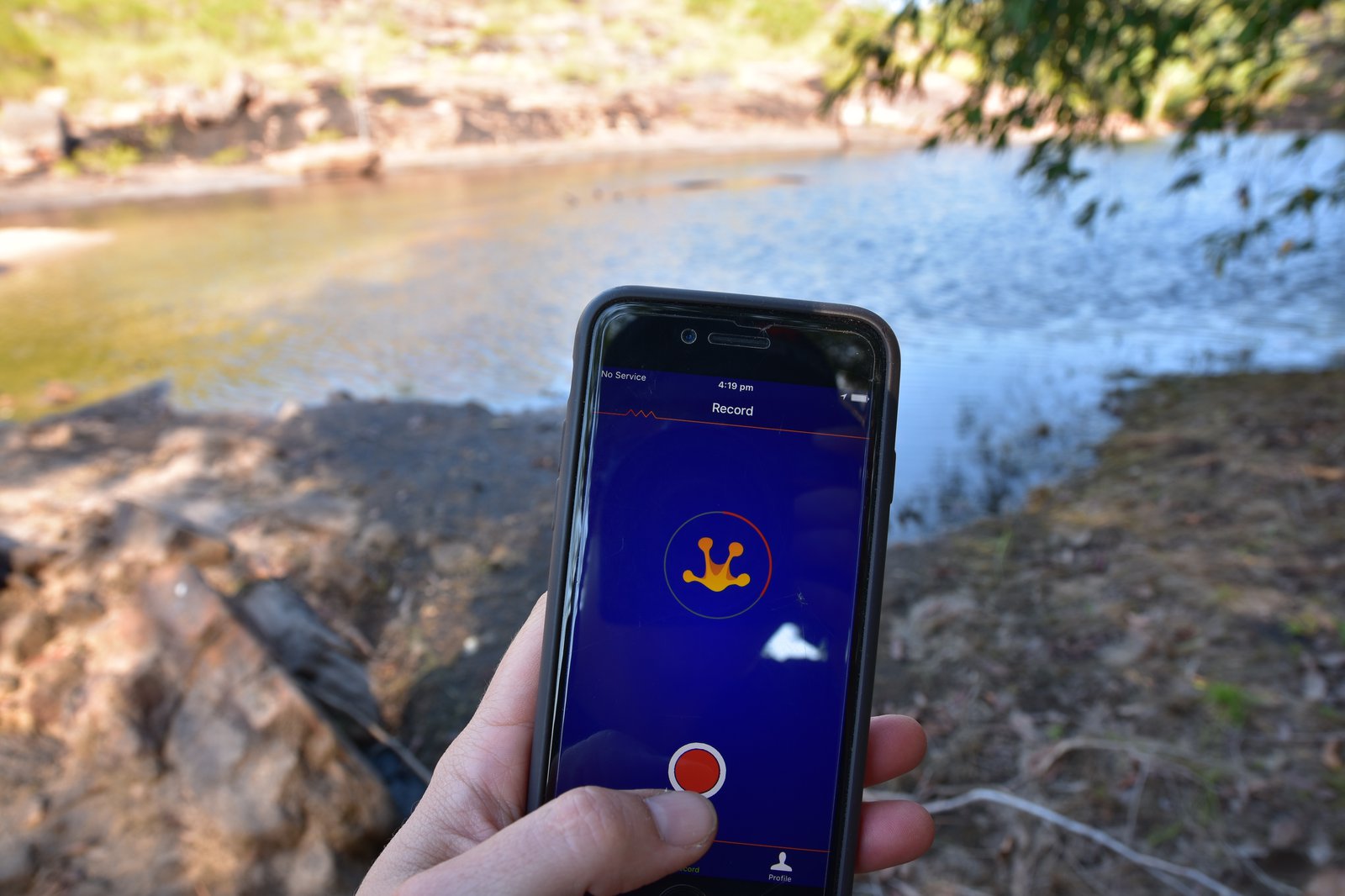Silent nights: frogs, drought and fire
It’s now more important than ever to monitor Australia’s frogs.
Frogs are amongst the most threatened groups of animals on the planet. In Australia, we’ve lost at least four of our 240 known frog species to extinction and dozens more are threatened. Recent drought and fires across Australia are impacting our frogs, with fewer frogs calling and nights growing quieter throughout much of the country.
We need your help to understand how different frog species are responding – and hopefully then recovering – from drought and fires.

Dry river bed, Macquarie Marshes, NSW.
Image: Jodi Rowley© Australian Museum
Frogs are very sensitive to environmental change, including weather and climate. This is in part because frogs are ectotherms (‘cold-blooded’), depending on the temperature of their environment to regulate their own temperature. They also have thin, permeable skin and require water (or, for a few species, just very humid environments), to lay their eggs. Every aspect of their behavior, reproduction and survival is dependent on either temperature or moisture (or both).
The past few years have seen much drier and hotter than average conditions over much of Australia, particularly in the east, and throughout spring and summer of 2019 and 2020, millions of hectares have burnt across Australia.

Burnt forest in eastern Australia.
Image: Cassie Thompson© Cassie Thompson
Many of Australia’s frogs, particularly those that live in the more arid parts of the country or those with an annual dry season, are adapted to handle the often hot, dry conditions – including species that can wait out the dry times by burrowing underground for months or even years until rains fall. However, other frog species are adapted to relatively constant cool, wet conditions of the rainforest. The impact of drought on different frog species and in different parts of Australia, is therefore likely to vary.

An Ornate Burrowing Frog (Platyplectrum ornatum) emerges from underground where it shelters in dry times.
Image: Jodi Rowley© Australian Museum
Fires are also a part of most Australian terrestrial ecosystems, but very little is known about which Australian frog species are most sensitive to fires, and how fires of this scale may impact them. Recent fires in the rainforests of northern New South Wales and southern Queensland are likely to pose a particular threat to frog species that are adapted to life in the rainforest, and found only in small areas – these include the tiny Pouched Frog (Assa darlingtoni), and the fat little Mountain Frogs (Philoria spp.) – these species live in the usually cool, damp mud at the headwaters of rainforest streams. These frogs are not adapted to fires and their ability to survive recent fire events, particularly combined with drought conditions, is unknown.

Rainforest in northern NSW, habitat to the Mountain Frog (Philoria kundagungan).
Image: Jodi Rowley© Australian Museum
People across Australia have already begun to reveal the impact of drought on frogs via the national citizen science project, FrogID.
In many parts of the country, frogs are silent. The usual pond, dam or stream is dry. In the last several months, users across the country revealed far fewer calling frogs of far fewer species compared to the same time the previous year. Even relatively common frog species such as the Eastern Banjo Frog (Limnodynastes dumerilii) are noticeably quieter. And when frogs aren't calling, they're not breeding.
While many frog species are thought to “bounce back” after disturbance, we do not know the impact of such long periods of hot and dry conditions on frogs, or how this unique combination of drought, fires and other threats are impacting Australia’s frogs. The future is even more uncertain, with climate change predicted to increase the frequency of extreme heat events, decrease rainfall across southern parts of the country, and increase the length of the fire season across large parts of Australia.

© Australian Museum
In the coming months, it is more important than ever to monitor our frogs. The easiest way to do this is simply by downloading the free FrogID app on your smart phone and submitting short recordings of any frogs you hear calling. If you've recorded frogs before in a place that is now burnt, please return when safe and continue recording any frogs that you hear, and if you're in a part of Australia that has had recent rains, now is the time to record any frog species now calling!
It's never been more important or easier- you can help monitor how frog species are responding, and hopefully recovering, from drought and fires. Together, we can better understand Australia’s frogs, and inform their conservation- helping to ensure the croaks, ribbits and whistles of frogs fill the night (especially after rain!) for generations to come.
Dr Jodi Rowley
Curator, Amphibian & Reptile Conservation Biology
Australian Museum Research Institute & UNSW Sydney
More information:
Weather and Climate: Bureau of Meteorology
Australian frogs and the national citizen science project FrogID: FrogID
Drought and bushfires stopping frogs from mating. Sydney Morning Herald. 28 November 2019.

Mountain frog (Philoria kundagungan).
Image: Jodi Rowley© Australian Museum

